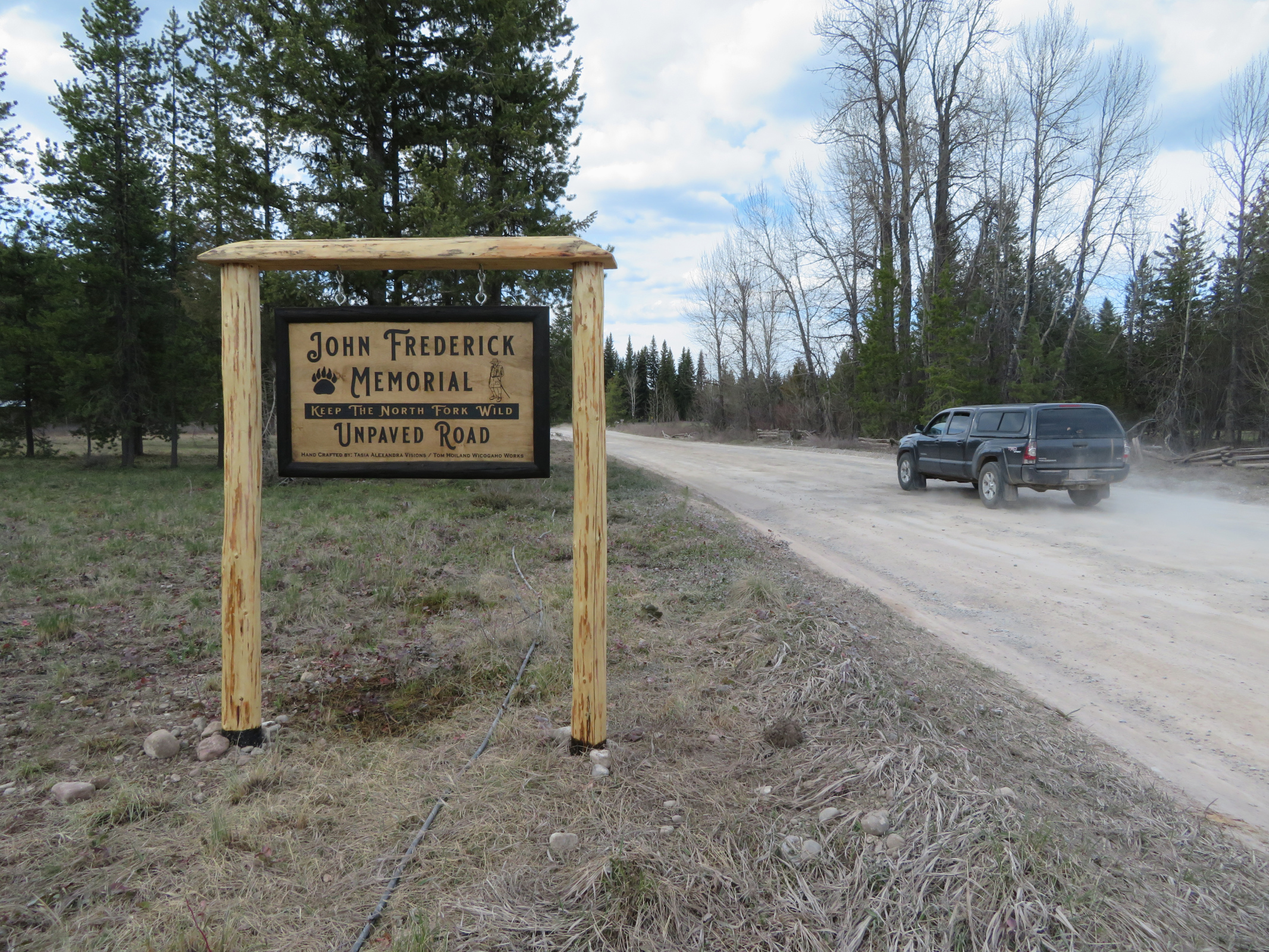
Category Archives: Environmental Issues
Wide variety of old-growth ecosystems across the US makes their conservation a complex challenge
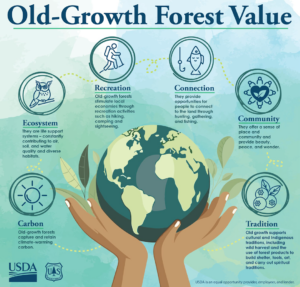 What exactly is “old growth? This article adds some context to the discussion . . .
What exactly is “old growth? This article adds some context to the discussion . . .
In an old-growth longleaf pine savanna, the absurdly long pine needles sing in the wind. Once considered forests, these landscapes in the southeastern U.S. coastal plain are open-canopied and sunny, more grassland than forest, with underbrush kept clear by frequent fires.
Longleaf pines – their needles can be up to 18 inches long – are among the longest-lived trees in eastern North America, surpassing 500 years if they are lucky enough to escape lightning strikes from the region’s frequent thunderstorms. Almost more fascinating is the ground cover, with up to 50 species per square meter, including some plants that are thousands of years old, with the vast majority of their biomass below ground. Picture an underground forest.
In the American West, there are other types of old-growth forest. Dry ponderosa pine woodlands are similarly open in structure and contain trees up to nearly 1,000 years old. But perhaps the most familiar old-growth forests are the complex, wet old-growth forests of the Pacific Northwest, which stretch from northwestern California to southeastern Alaska.
Trump administration cuts back forest protections to increase logging
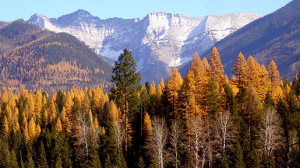
No big surprise. Whether it will actually lead to more timber production is an open question . . .
[Click here for map of areas under consideration for increased logging. (PDF, 19.7MB)]
President Donald Trump’s administration acted to roll back environmental safeguards around future logging projects on more than half of U.S. national forests under an emergency designation announced Friday that cites dangers from wildfires.
Whether the move will boost lumber supplies as Trump envisioned in an executive order last month remains to be seen. Former President Joe Biden’s administration also sought more logging in public forests to combat fires, which are worsening as the world gets hotter, yet U.S. Forest Service timber sales stayed relatively flat under his tenure.
Agriculture Secretary Brooke Rollins did not mention climate change in Friday’s directive, which called on her staff to speed up environmental reviews.
FWP releases final Montana Wolf Management Plan
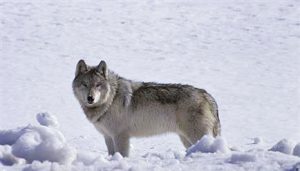
The press release is quoted in full here. There’s a link to the final plan at the end.
Mar 26, 2025 2:07 PM
HELENA – Montana Fish, Wildlife & Parks released the 2025 Montana Gray Wolf Conservation and Management Plan today, wrapping up an extensive public process to capture updates to wolf management strategies and research into a new plan.
The final 2025 Montana Gray Wolf Conservation and Management Plan (2025 Wolf Plan) incorporates updates in wolf-related research, more than 20 years of management experience, evolution in conflict management, new laws, social perspectives, and public input.
“The former wolf plan served us well, but it was time to make sure our management plan contained the evolutions we’ve made in wolf research, monitoring, conflict management, and the changes to the legal framework we operate under today,” said FWP Director Christy Clark.
The 2025 Wolf Plan builds on a foundation of FWP wolf management: monitoring populations, tracking harvest, effective conflict management, and flexibility to integrate evolutions in science.
The 2025 Wolf Plan shifts a key counting metric from the number of breeding pairs to the number of wolves representing at least 15 breeding pairs. The final plan establishes that 450 wolves would ensure 15 breeding pairs. Population estimates will continue to be determined by the peer-reviewed Integrated Patch Occupancy Modeling method, or iPOM. The final plan also reflects the current depredation prevention and response program.
“Wolf management discussions continue to draw a lot of attention from people in Montana and around the world,” Clark said. “The 2025 Wolf Plan will ensure those conversations can be grounded in current science and the research FWP is doing every day.”
To see the final plan, click here.
House preliminarily approves ‘River census’ study bill
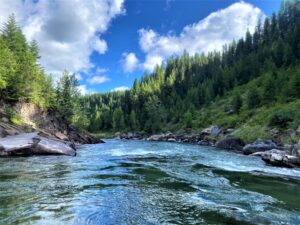
This sounds like a really good idea. Note that the proposed study includes the three forks of the Flathead River, as well as the main stem as far as Flathead Lake . . .
Rep. David Bedey was born and raised in Hamilton, and he used to fish the Bitterroot River, but it’s so busy he doesn’t anymore.
“Now I go to the Clark Fork or somewhere else where I don’t have to play bumper cars with folks,” said Bedey, a Hamilton Republican.
Bedey made the comments Wednesday in the House Appropriations Committee in support of river use data that would be collected through House Bill 762, sponsored by Rep. Joshua Seckinger, D-Bozeman.
The “river census” bill, which preliminarily passed 67-32 in the House one day earlier, would require Montana Fish, Wildlife and Parks to produce a report of all watercraft on 16 river stretches in the summer totaling 966 miles in the state.
Continue reading . . .
$1M available for community-based bear conflict management

Looks like a pretty significant effort . . .
As bears begin emerging from hibernation, wildlife conflict specialists in northwest Montana are preparing for a busy spring. But they hope that by continuing to equip communities with tools to avoid conflicts, they’ll spend more time on prevention this season, and less time setting traps.
It’s a strategy that’s been paying off in recent years as bear-human conflict experts ramp up their education and outreach curriculum and push preventative measures, such as installing electric fences and investing in bear-resistant garbage containers in order to get ahead of the curve. Although a high call volume for human-bear conflicts has continued to overwhelm specialists with Montana Fish, Wildlife and Parks (FWP), they’ve refined their effort to target the root of the problem — unsecured food and other wildlife attractants in the wildland urban interface (WUI).
Trapping and relocating bears, they say, is a short-term solution to a persistent problem; convincing residents to lock up their grain, electrify their chicken coops and store their barbecue grills indoors, on the other hand, makes a lasting difference.
See also . . .
FWP Press release: New funding available for community-led bear conflict prevention
B.C. Rockies conservation talks stumble as trust breaks down
Think conservation threats to the trans-boundary Flathead drainage have settled down? Maybe not…
The leader of one of four Ktunaxa First Nations in B.C. says she’s lost confidence in ongoing discussions between the nations and the federal and provincial governments over land management and potential conservation measures in the Elk and Flathead valleys.
Recent discussions have centred on two parcels of land known as the Dominion coal blocks, which together cover 200 square kilometres in the Elk and Flathead valleys in Ktunaxa Nation territory in southeast B.C. The Flathead Valley, in particular, is an area where Gravelle wants to see Indigenous-led conservation.
Howl – The dark side of wolf reintroduction
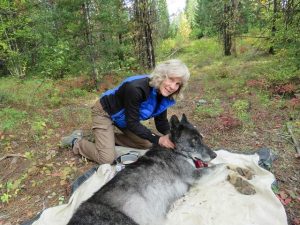
Our own Diane Boyd got some more ink, this time in a long-form article with lots of photos published in ‘Nautilus’…
Diane Boyd walked along the North Fork of the Flathead River. It was a clear blue summer day, and the wolf biologist relished being in this Rocky Mountain valley in northwestern Montana. She set foot here 45 years ago to track the first known gray wolf to wander into the western continental United States from Canada in decades. Humans had exterminated the last of them in the 1930s.
The river wove through pine, aspen, and willow trees that rose along the edge of a sprawling grass meadow. The mountain peaks in the distance were topped with snow. Boyd grew up in suburban Minnesota, where she was the neighborhood kid who could be found at the wild edges of the subdivision putting caterpillars in jars.
“I always wanted to go more and more wild in my life—wildlife, wild places—and it doesn’t get a lot wilder than here,” Boyd said to me last summer, as we walked through the quiet meadow.
At age 69, dressed in jeans, running shoes, and a T-shirt picturing a dog lazing on a lake pier, Boyd seemed very much the innately independent biologist who settled here at age 24. She spoke with a directness that had little room for sentimentality. The meadow area is called Moose City and was originally a 1910s homesteader ranch with six log cabins. Boyd lived alone in one of the tiny cabins without electricity or running water for 12 years.
NFPA submits comments to Flathead Forest regarding the Comprehensive River Management Plan (CRMP)
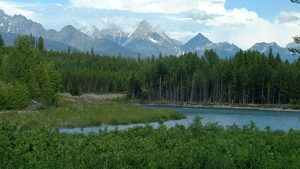 The NFPA has submitted an extensive set of comments to the Flathead National Forest regarding the Comprehensive River Management Plan (CRMP) for the Flathead Wild and Scenic River (WSR) System.
The NFPA has submitted an extensive set of comments to the Flathead National Forest regarding the Comprehensive River Management Plan (CRMP) for the Flathead Wild and Scenic River (WSR) System.
Access the comments in PDF format here.
If you have not yet submitted your own views, note that the deadline for submitting comments is Friday, February 7.
Agenda posted for Flathead Forest’s Comprehensive River Management Plan informational sessions

We’re starting to see some real movement on the Comprehensive River Management Plan (not so affectionately known as the CRMP). The text of the official press release follows, but here are the highlights…
There are two informational meetings. The first is on Tuesday, January 21st, the second is on Wednesday, January 22nd. Both are being held from 6 to 8pm at the Flathead Valley Community College, Arts and Technology building, room 130 (AT-130). There is a listen-only virtual option for the presentation portions of the meeting.
From the official press release . . .
There are two opportunities to join the Flathead National Forest and Glacier National Park for informational sessions on developing the Comprehensive River Management Plan (CRMP); specialists will provide background on river management, information on the development of the CRMP, and history of the three forks of the Flathead River and the Wild & Scenic designation.
Details on the agenda and options to attend are listed below. Additional information on how to join a Teams meeting, the CRMP, and the development of the plan to date can be found at our webpage.
Agenda:
5:45 PM Doors Open
6:00 PM Welcome, Introductions and Agenda Overview
6:10 PM Overview of Proposed Action
6:30 PM Open House Session – resource and fork-specific tables will be available to facilitate discussion
(There will be no virtual presentation during this time)
7:30 PM Question & Answer Session
The question & answer session is intended to facilitate public comment submission on the proposed action. Virtual attendees can view this session live, but there will be no option to submit questions. If you have a question that was not answered during the sessions, you may contact Chris Prew at 406-758-5322 or christopher.prew@usda.gov prior to the deadline of February 7, 2025. Sending a question cannot be considered as a formal comment submission. To submit a comment on the project, visit the project webpage.
7:50 PM Closing Remarks
8:00 PM Adjourn
To attend the sessions in-person:
Tuesday January 21 at 6pm – 8pm
Wednesday January 22 at 6pm – 8pm
Flathead Valley Community College, Arts and Technology building, room 130 (AT-130)
To attend the sessions virtually:
Click here to join the teams meeting